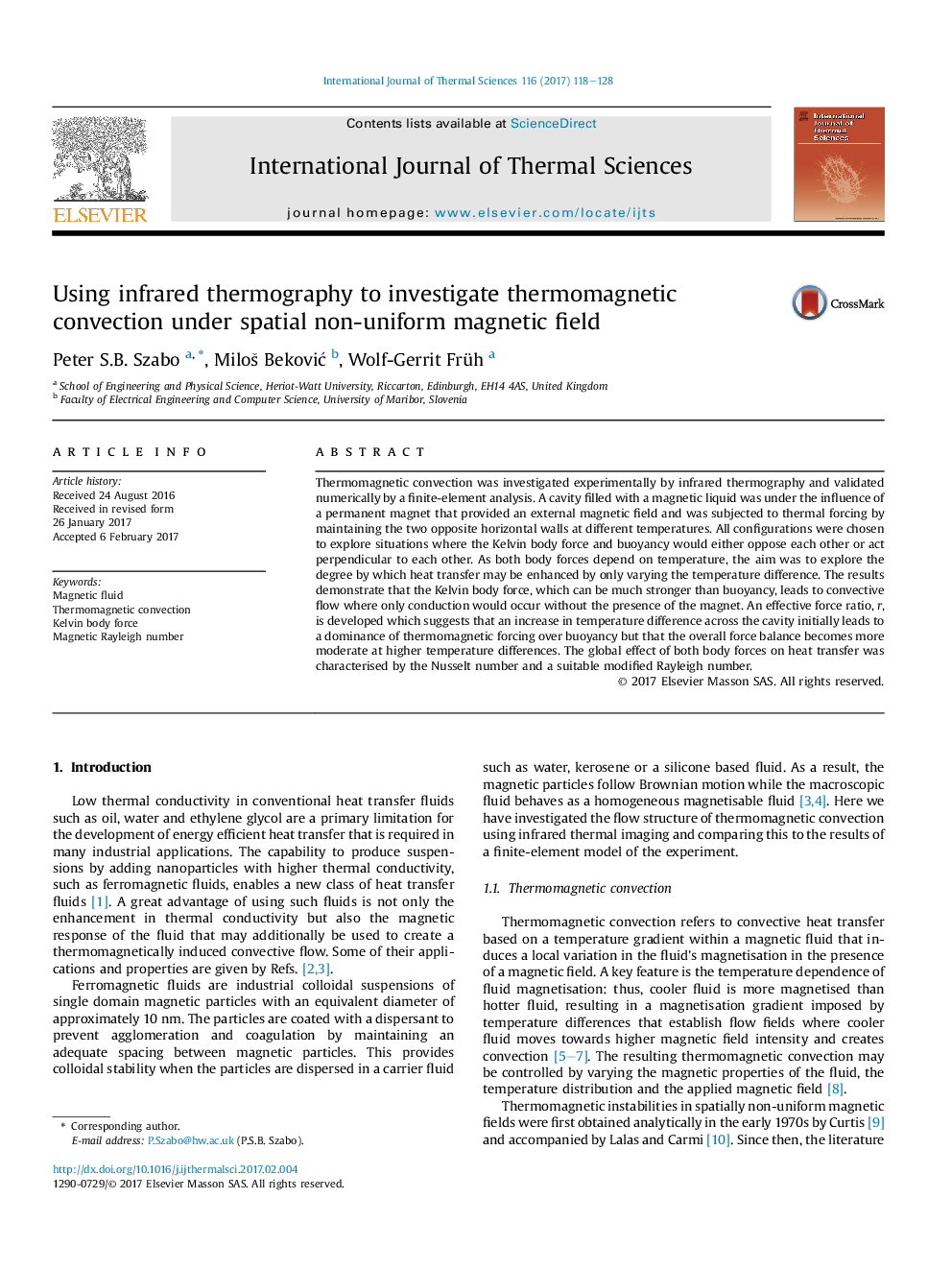| کد مقاله | کد نشریه | سال انتشار | مقاله انگلیسی | نسخه تمام متن |
|---|---|---|---|---|
| 4995332 | 1458706 | 2017 | 11 صفحه PDF | دانلود رایگان |
عنوان انگلیسی مقاله ISI
Using infrared thermography to investigate thermomagnetic convection under spatial non-uniform magnetic field
ترجمه فارسی عنوان
با استفاده از ترموگرافی مادون قرمز برای بررسی حرارتی گرما مغناطیسی تحت میدان مغناطیسی غیر یکنواخت فضایی
دانلود مقاله + سفارش ترجمه
دانلود مقاله ISI انگلیسی
رایگان برای ایرانیان
کلمات کلیدی
مایع مغناطیسی، حرارتی مغناطیسی، نیروی کلوین، شماره رینوی مغناطیسی،
موضوعات مرتبط
مهندسی و علوم پایه
مهندسی شیمی
جریان سیال و فرایندهای انتقال
چکیده انگلیسی
Thermomagnetic convection was investigated experimentally by infrared thermography and validated numerically by a finite-element analysis. A cavity filled with a magnetic liquid was under the influence of a permanent magnet that provided an external magnetic field and was subjected to thermal forcing by maintaining the two opposite horizontal walls at different temperatures. All configurations were chosen to explore situations where the Kelvin body force and buoyancy would either oppose each other or act perpendicular to each other. As both body forces depend on temperature, the aim was to explore the degree by which heat transfer may be enhanced by only varying the temperature difference. The results demonstrate that the Kelvin body force, which can be much stronger than buoyancy, leads to convective flow where only conduction would occur without the presence of the magnet. An effective force ratio, r, is developed which suggests that an increase in temperature difference across the cavity initially leads to a dominance of thermomagnetic forcing over buoyancy but that the overall force balance becomes more moderate at higher temperature differences. The global effect of both body forces on heat transfer was characterised by the Nusselt number and a suitable modified Rayleigh number.
ناشر
Database: Elsevier - ScienceDirect (ساینس دایرکت)
Journal: International Journal of Thermal Sciences - Volume 116, June 2017, Pages 118-128
Journal: International Journal of Thermal Sciences - Volume 116, June 2017, Pages 118-128
نویسندگان
Peter S.B. Szabo, MiloÅ¡ BekoviÄ, Wolf-Gerrit Früh,
